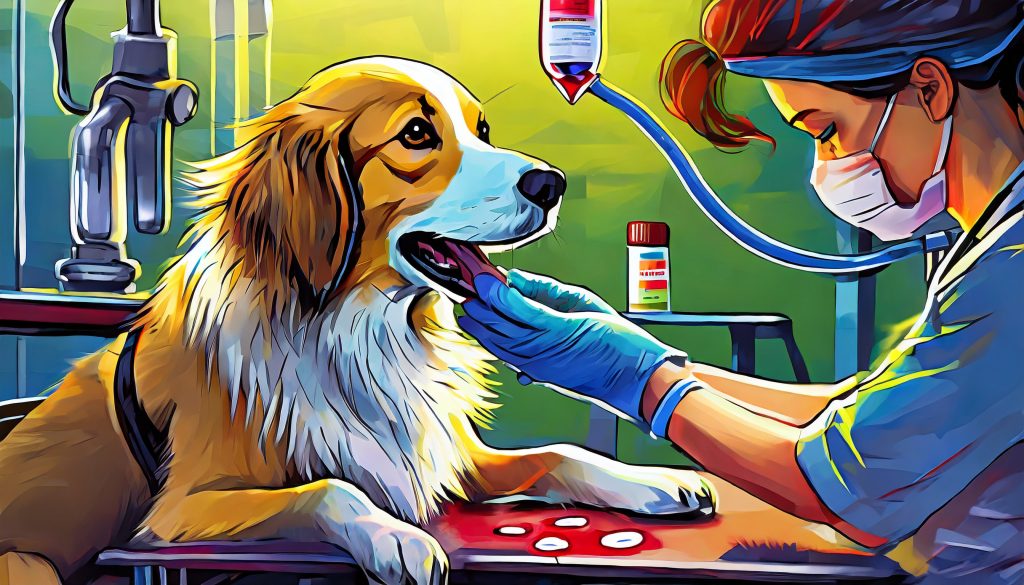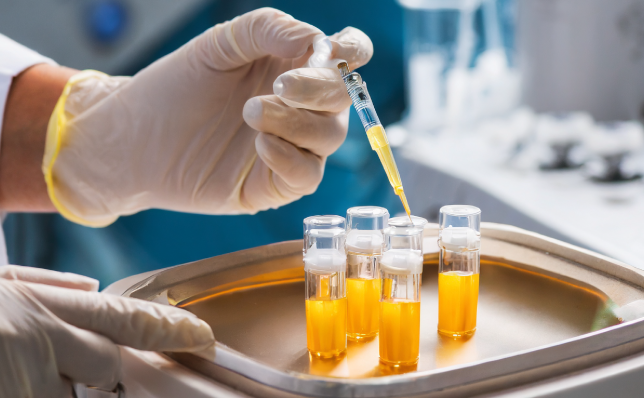In the dynamic world of veterinary medicine, a remarkable treatment method stands out: platelet-rich plasma (PRP) therapy. Using the body’s own healing mechanisms, this innovative approach opens new doors in regenerative medicine for our animal friends.
What is PRP?
PRP therapy involves concentrating platelets from the patient’s blood. Platelets, small blood cells that play a role in clotting and are rich in growth factors, are isolated and concentrated and used to accelerate the healing of injured tissues such as tendons and ligaments.
The Effect of PRP: Healing Our Four-Legged Friends
Veterinarians are now using PRP therapy for a variety of conditions, especially on dogs and horses. Muscle tears, ligament strains, and even more complex conditions such as major wounds or burns are showing significant improvements with PRP. It is also noted for its effectiveness in treating eye conditions such as corneal ulcers.
Today, veterinary medicine effectively uses platelet-rich plasma (PRP) therapy in many areas such as skeletal-muscular system disorders (osteoarthritis, tendon and ligament injuries, muscle damage), wound healing, post-operative healing processes, dental and oral surgery interventions, and eye diseases. This method plays an important role in the development of modern veterinary medicine, contributing to the health of animals and accelerating their healing processes.

The Science of PRP
The secret behind the success of PRP lies in the high concentration of platelets. These platelets release growth factors that help tissue repair and reduce inflammation, attracting stem cells to the site of injury. This process activates the body’s natural healing mechanisms, leading to a faster and more effective recovery.
Recent advances in PRP therapy have expanded its applications. Veterinarians can now use it not only for musculoskeletal injuries, but also in new treatment areas such as laminitis, a painful hoof disease of horses, and even traumatic brain injuries.
The effectiveness of PRP therapy depends on several factors: the concentration of platelets, the method of activation, and their correct delivery to the site of injury. Veterinary scientists are constantly improving these parameters to maximize the therapeutic benefits of PRP.
A Bright Future Ahead
As we delve deeper into the potential of PRP therapy, it is clear that this technique has great promise in veterinary medicine. By harnessing the body’s innate healing power, PRP therapy is not just a treatment, it is a revolution in the way we care for our animal companions.
PRP therapy is an example of the extraordinary advances being made in veterinary medicine. As research develops, this therapy offers a beacon of hope for pet owners and their companions, poised to transform our approach to healing and recovery in animals.
Related research articles
Alves JC, Santos A, Jorge P. Platelet-rich plasma therapy in dogs with bilateral hip osteoarthritis. BMC Vet Res. 2021 Jun 5;17(1):207. doi: 10.1186/s12917-021-02913-x.
Borş SI, Ibănescu I, Borş A, Abdoon ASS. Platelet-rich plasma in animal reproductive medicine: Prospective and applications. Reprod Domest Anim. 2022 Nov;57(11):1287-1294. doi: 10.1111/rda.14213.
McCarrel TM. Equine Platelet-Rich Plasma. Vet Clin North Am Equine Pract. 2023 Dec;39(3):429-442. doi: 10.1016/j.cveq.2023.06.007.
Meznerics FA, Fehérvári P, Dembrovszky F, Kovács KD, Kemény LV, Csupor D, Hegyi P, Bánvölgyi A. Platelet-Rich Plasma in Chronic Wound Management: A Systematic Review and Meta-Analysis of Randomized Clinical Trials. J Clin Med. 2022 Dec 19;11(24):7532. doi: 10.3390/jcm11247532.
Sharun K, Chandran D, Manjusha KM, Mankuzhy PD, Kumar R, Pawde AM, Dhama K, El-Husseiny HM, Amarpal. Advances and prospects of platelet-rich plasma therapy in veterinary ophthalmology. Vet Res Commun. 2023 Sep;47(3):1031-1045. doi: 10.1007/s11259-022-10064-z.
Published on: 29 December 2023Edited on: 29 December 2023

